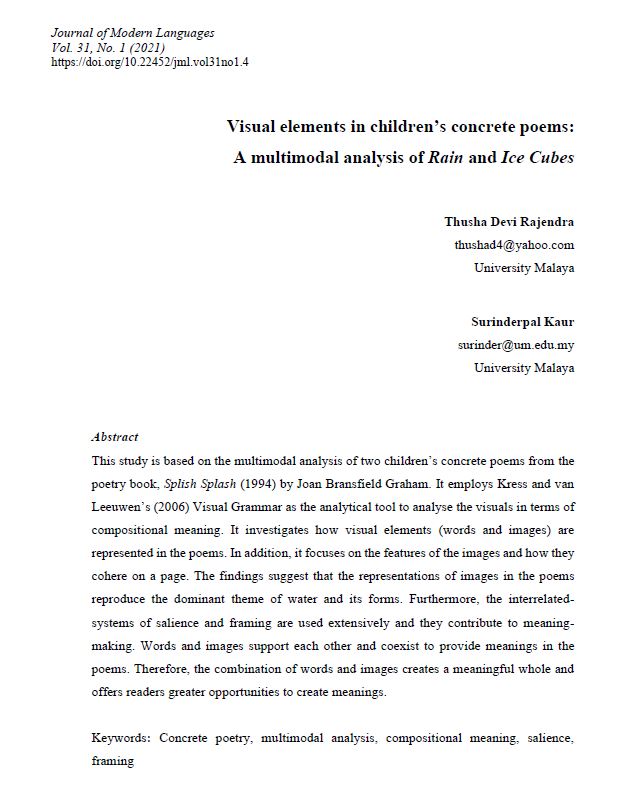Visual elements in children’s concrete poems: A multimodal analysis of Rain and Ice Cubes
DOI:
https://doi.org/10.22452/jml.vol31no1.4Keywords:
Concrete poetry, multimodal analysis, compositional meaning, salience, framingAbstract
This study is based on the multimodal analysis of two children’s concrete poems from the poetry book, Splish Splash (1994) by Joan Bransfield Graham. It employs Kress and van Leeuwen’s (2006) Visual Grammar as the analytical tool to analyse the visuals in terms of compositional meaning. It investigates how visual elements (words and images) are represented in the poems. In addition, it focuses on the features of the images and how they cohere on a page. The findings suggest that the representations of images in the poems reproduce the dominant theme of water and its forms. Furthermore, the interrelated-systems of salience and framing are used extensively and they contribute to meaning-making. Words and images support each other and coexist to provide meanings in the poems. Therefore, the combination of words and images creates a meaningful whole and offers readers greater opportunities to create meanings.
Downloads





